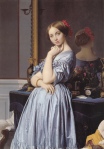English actress Ellen Terry is immortalised in an iconic painting by Anglo-American painter John Singer Sargent (1856-1925), who was considered the leading portrait painter of his day. In this portrait, which I was privileged to be allowed to include in my book Wilde’s Women,Terry is wearing her costume for Lady Macbeth, a remarkable emerald gown that shimmered with the iridescent wings of the one thousand jewel beetles that had been sewn into it.

Presented by Sir Joseph Duveen 1906
One of my favourite passages in Wilde’s Women describes Oscar Wilde glancing out of the window of his Tite Street home and seeing Terry, a great friend of his, arriving at John Singer Sargent’s Chelsea studio for a sitting. This extraordinary sight prompted him to remark:
The street that on a wet and dreary morning has vouchsafed the vision of Lady Macbeth in full regalia magnificently seated in a four-wheeler can never again be as other streets: it must always be full of wonderful possibilities.[i]
Later, Wilde chose Singer Sargent’s iconic painting for the frontispiece of the July 1889 issue of The Woman’s World, the magazine he edited from 1887-1889.
To his great credit, Sargent suggested that Alice Comyns Carr, a vocal advocate of aesthetic dress who had worked on the design for Terry’s magnificent costume, should co-sign his painting since he considered her as much its creator as he. The woman who made Comyns Carr’s design a reality was dressmaker Ada Nettleship who, along with her team of thirty seamstresses, also made Constance Wilde’s beautiful aesthetic wedding gown. Constance’s gown, the subject of intense public scrutiny, went on public display in March 1884, and was described in society magazine Queen:
…rich creamy satin dress…of a delicate cowslip tint; the bodice, cut square and somewhat low in front, was finished with a high Medici collar; the ample sleeves were puffed; the skirt, made plain, was gathered by a silver girdle of beautiful workmanship, the gift of Mr. Oscar Wilde; the veil of saffron-coloured Indian silk gauze was embroidered with pearls and worn in Marie Stuart fashion; a thick wreath of myrtle leaves crowned her frizzed hair; the dress was ornamented with clusters of myrtle leaves; the large bouquet had as much green in it as white [ii].
Terry loved her Lady Macbeth costume and wrote about it in her autobiography, The Story of My Life:
One of Mrs. Nettle’s greatest triumphs was my Lady Macbeth dress, which she carried out from Mrs Comyns Carr. I am glad to think it is immortalised in Sargent’s picture. From the first I knew that picture was going to be splendid. In my diary for 1888 I was always writing about it:
***
“The picture of me is nearly finished, and I think it is magnificent. The green and blue of the dress is splendid, and the expression as Lady Macbeth holds the crown over her head is quite wonderful . . .”
***
“Sargent’s picture is almost finished, and it really is splendid. Burne-Jones yesterday suggested two or three alterations about the colour which Sargent immediately adopted, but Burne-Jones raves about the picture . . .”
***
“Sargent’s picture is talked of everywhere and quarrelled about as much as my way of playing the part . . .”
***
“Sargent’s Lady Macbeth in the New Gallery is a great success. The picture is the sensation of the year. Of course, opinions differ about it, but there are dense crowds round it day after day.”
***
Since then it has gone nearly over the whole of Europe and is now resting for life in the Tate Gallery. Sargent suggested by this picture all that I should have liked to be able to convey in my acting as Lady Macbeth.
She looks both wonderful and terrible it it.
The dress, which is exhibited at Smallhyde Place, Terry’s former home, was painstakingly restored in 2011. I am very much looking forward to visiting Terry’s former home with the Oscar Wilde Society. I delivered a talk on the close connections between Terry and Wilde in the barn theatre in September 2016 and you can read the transcript here.
References:
[i] W. Graham Robertson, Time Was (London, H. Hamilton ltd., 1933, reprinted by Quartet Books, 1981), p.233
[ii] From Queen, reprinted in Freeborn County Standard from Albert Lea, Minnesota, 23 July 1884, p.7; also described in Sherard, Life of Oscar Wilde, p.258





